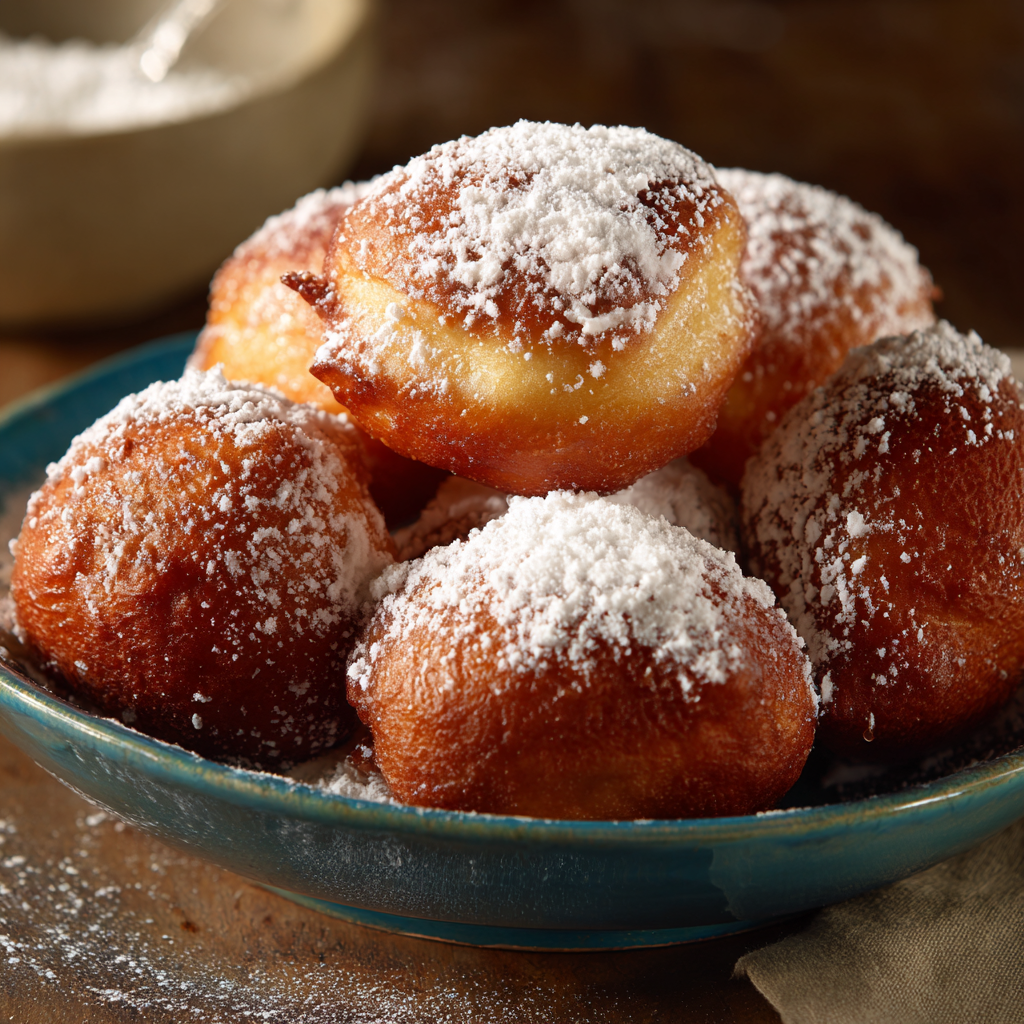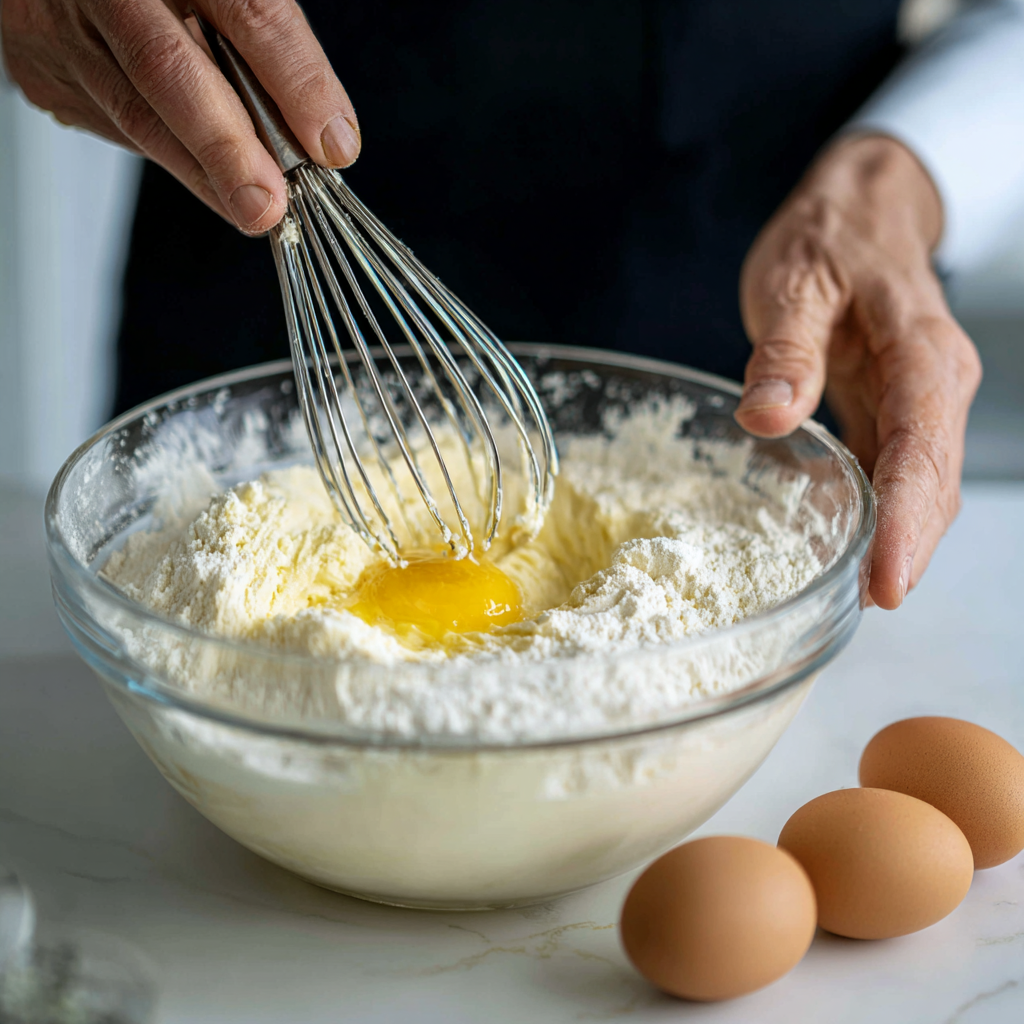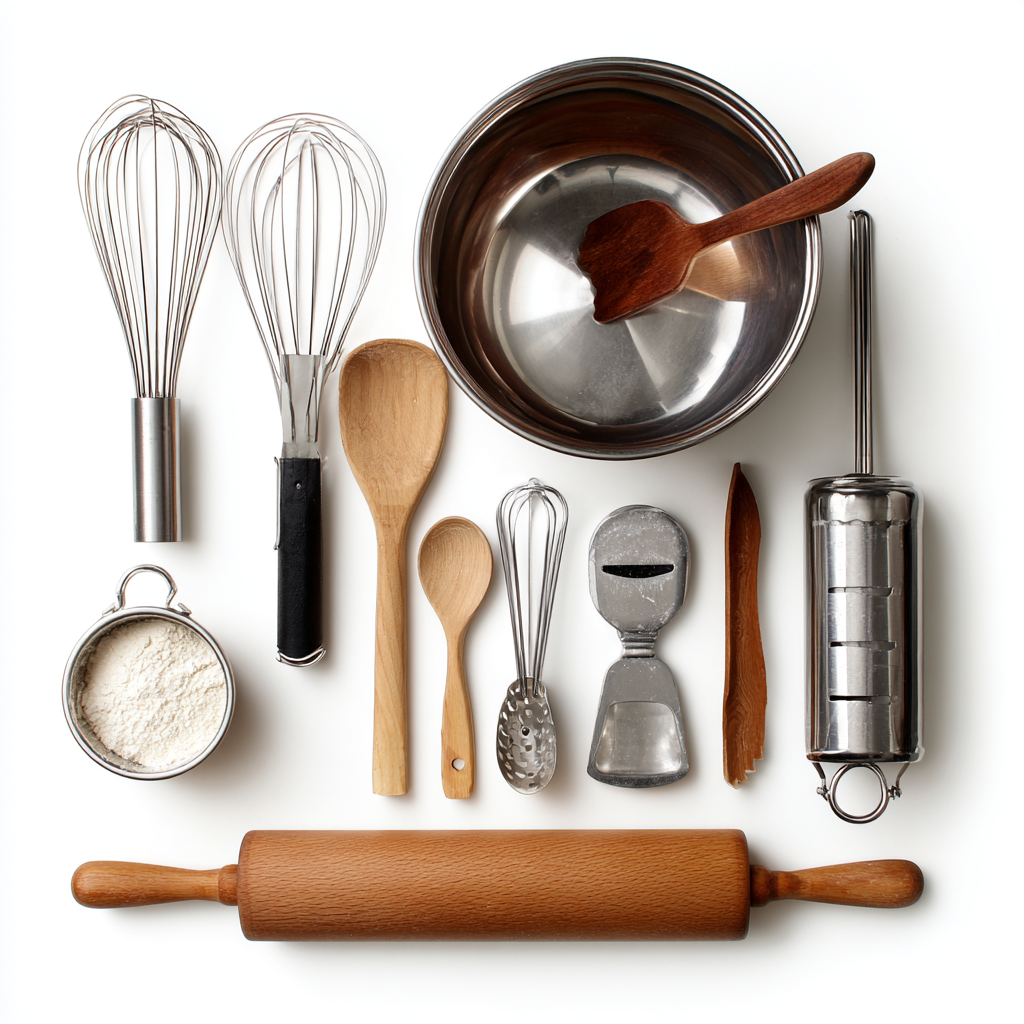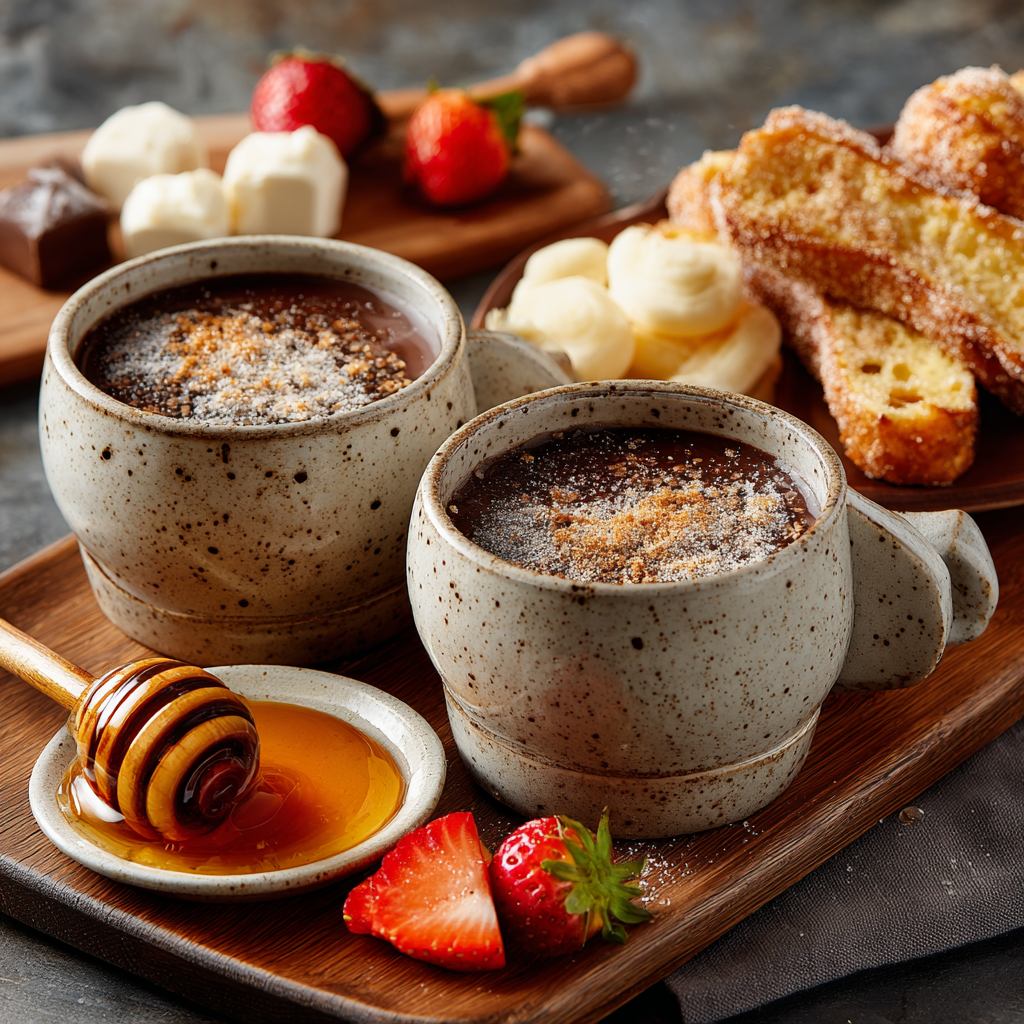Bougnettes (French Beignets) are a crispy and fluffy French treat from the south. Explore their rich history, recipe tips, and variations in this detailed guide.
Bougnettes (French Beignets): A Crispy, Fluffy French Delight
Bougnettes (French Beignets) are a mouthwatering pastry that holds a cherished place in French culinary tradition—especially in the sun-drenched regions of Southern France, such as Languedoc and Occitanie. These delightful golden pillows of dough, often likened to their more famous cousins, beignets, are a regional treasure celebrated for their simplicity, versatility, and rich cultural history. Bougnettes can be sweet or savory, making them a beloved treat during holidays, local fairs, and family gatherings. Sweet versions may be dusted with powdered sugar or infused with hints of orange blossom or citrus zest, while savory varieties are sometimes enriched with herbs or pork fat, reflecting the rustic charm of village cooking.
With their irresistibly crispy exterior and tender, airy center, bougnettes invite comparison to doughnuts, fritters, and other fried delicacies—but they stand apart through their regional flair and deep roots in home kitchens. Whether you’re discovering them for the first time or rekindling memories of a French childhood, this pastry offers a taste of tradition and warmth in every bite. Let’s dive into the origin, authentic recipes, cultural significance, and expert tips to master this hidden gem of French pastries.

Introduction to Bougnettes
What are Bougnettes?
Bougnettes are a type of French-fried dough pastry, often classified as a kind of beignet, but with a distinct Southern French twist. Unlike the more common New Orleans-style beignets, bougnettes are typically oval or round, sometimes twisted or folded before being fried.
Difference Between Bougnettes and Beignets
While both involve deep-fried dough, bougnettes often include ingredients like lemon zest, brandy, or orange blossom water, giving them a regional character. Beignets are typically square and puffier, whereas bougnettes are flatter and slightly crispier.
The Origin and Cultural Roots
History of Bougnettes in Southern France
Bougnettes hail from regions like Languedoc and Occitanie, where they were traditionally prepared during Easter and Carnival. These treats were considered festive, symbolic of abundance and joy.
Regional Variations
Each village seems to have its own take—some add rum, others infuse their dough with anise seeds. In certain parts of Aveyron, bougnettes are even savory and meat-filled, showcasing the versatility of this pastry.
Ingredients for Traditional Bougnettes
Common Ingredients
- All-purpose flour
- Eggs
- Milk
- Sugar
- Butter
- Baking powder or yeast
- Zest of lemon or orange
- Brandy or rum (optional)
- Pinch of salt
- Powdered sugar for dusting
Variations in Ingredients by Region
In Occitan traditions, orange blossom water or pastis (anise-flavored liqueur) is sometimes added. Others use yeast instead of baking powder for a lighter texture.
Step-by-Step Recipe
Preparing the Dough
- Beat the eggs with sugar until light and fluffy.
- Add melted butter, milk, zest, and optional brandy.
- Slowly incorporate the flour, salt, and leavening agent until a soft dough forms.
- Let it rest for 1–2 hours.

Shaping and Frying
- Roll out the dough to ½ cm thickness.
- Cut into ovals or diamonds.
- Heat oil in a deep fryer or heavy-bottomed pan.
- Fry until golden brown, flipping once.
Cooling and Dusting
Place on paper towels to drain excess oil, then dust generously with powdered sugar.
Tools You’ll Need in the Kitchen
Must-Have Tools
- Mixing bowls
- Whisk or electric mixer
- Rolling pin
- Dough cutter or knife
- Deep fryer or heavy-bottomed pot
- Slotted spoon

Optional Tools for Better Results
- Kitchen thermometer (for oil temp control)
- Pastry wheel for decorative edges
Pro Tips for Perfect Bougnettes
Achieving the Right Texture
- Don’t over-knead the dough.
- Let the dough rest properly to relax the gluten.
- Maintain oil temperature between 170°C–180°C (340°F–355°F).
Preventing Oil Soak
- Use clean, fresh oil.
- Avoid overcrowding the fryer.
- Drain well and serve warm.
Sweet vs. Savory Bougnettes
Traditional Sweet Bougnettes
The classic version is sweet, dusted with powdered sugar, and served with coffee or tea. They may contain zest or even chocolate chips.
Savory Bougnettes with Cheese or Herbs
Savory bougnettes, especially in rural areas, may include grated cheese, garlic, or herbes de Provence. Some even stuff them with minced meat or sausage.
Bougnettes vs. Other French Pastries
Bougnettes vs. Beignets
Bougnettes are flatter, more rustic, and often use aromatic flavors. Beignets are puffier and typically served in cafés.
Bougnettes vs. Bugnes vs. Churros
- Bugnes are a Lyonnais variation, often twisted.
- Churros are Spanish, longer, and ridged.
- Bougnettes sit somewhere in between, crisp and pillow soft.
How to Serve Bougnettes
Serving Suggestions
- With hot chocolate or coffee
- Sprinkled with cinnamon sugar
- Dipped in fruit compote or honey

Pairings with Beverages
- Sweet: Coffee, tea,
- Savory: Dry rosé, light lager, sparkling water
Nutritional Information
| Nutrient | Approx. per Bougnette (60g) |
|---|---|
| Calories | 220 |
| Fat | 12g |
| Carbs | 24g |
| Protein | 3g |
Tips for a Healthier Version
- Bake instead of fry
- Use olive oil or avocado oil
- Replace white flour with whole wheat or spelt
Storage and Reheating Tips
How Long Do Bougnettes Last?
Best enjoyed fresh, but they can be stored in an airtight container for 2–3 days.
Best Reheating Methods
- Oven: 150°C for 5–7 minutes
- Air fryer: 160°C for 3 minutes
- Avoid microwaving—it makes them soggy
Gluten-Free and Vegan Alternatives
Substitution Tips
- Gluten-Free: Use a mix of rice flour and tapioca starch
- Vegan: Replace eggs with flax eggs and use plant-based milk
Recipe for Dietary Restrictions
Gluten-free flour, almond milk, coconut oil, and agave syrup can produce a delicious vegan version.
Popular Bougnettes Festivals in France
Events Celebrating Bougnettes
- Fête de la Bougnette in Occitan villages
- Carnaval de Limoux where bougnettes are sold as street food
Local Delicacies During Festivals
Often served with regional cheeses as part of larger feasts.
Where to Buy or Try Authentic Bougnettes
Bakeries and Markets in France
- Boulangerie Jean-Claude in Albi
- Marché de Revel in Haute-Garonne
- Weekly farmers’ markets across Occitanie
Online Ordering Options
Some French gourmet shops offer international delivery for pre-cooked bougnettes or mix kits.
Frequently Asked Questions (FAQs)
1. Are bougnettes the same as beignets?
No. While similar, bougnettes are a regional variation from Southern France with their own flavor and texture.
2. Can I make bougnettes ahead of time?
Yes, but they taste best freshly fried. Reheat in the oven for best results.
3. Can bougnettes be frozen?
Yes. Freeze them after frying and reheat in the oven when needed.
4. Are bougnettes always sweet?
No. Some savory versions exist with cheese or meat fillings.
5. What oil is best for frying bougnettes?
Neutral oils like sunflower, canola, or grapeseed oil are ideal.
6. Can kids help make bougnettes?
Yes! They can help shape the dough and dust with sugar—but keep them away from hot oil.
Conclusion
Bougnettes (French Beignets) are more than just fried dough—they are a beloved symbol of joy, celebration, and the deep-rooted culinary traditions of Southern France. Originating from regions like Languedoc and Occitanie, these golden, airy treats are steeped in history and often passed down through generations of home cooks and bakers. Traditionally prepared during festive occasions such as Carnival, Easter, and village fairs, bougnettes bring people together, filling kitchens with the comforting aroma of frying dough and shared memories.
Their versatility is part of what makes them so special—whether enjoyed sweet with a generous dusting of powdered sugar, infused with orange blossom or lemon zest, or crafted in savory forms with herbs and rich local ingredients, bougnettes offer something for every palate. Freshly made and served warm, they carry a rustic charm that evokes the relaxed, convivial spirit of the French countryside. Each bite is a reminder of simpler times, family traditions, and the enduring joy that food can bring. Whether served as a midday snack, a holiday treat, or a nostalgic indulgence, bougnettes bring a bit of Southern French sunshine to your table—warm, golden, and impossible to resist.
